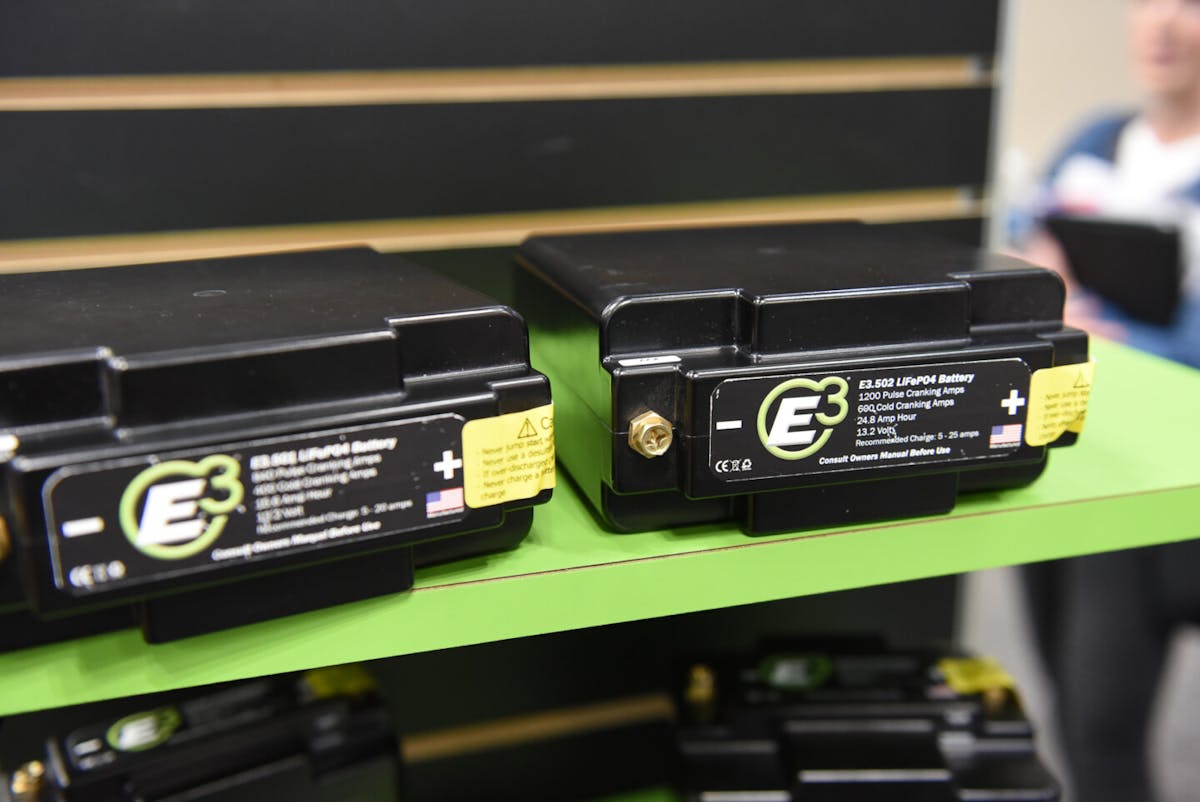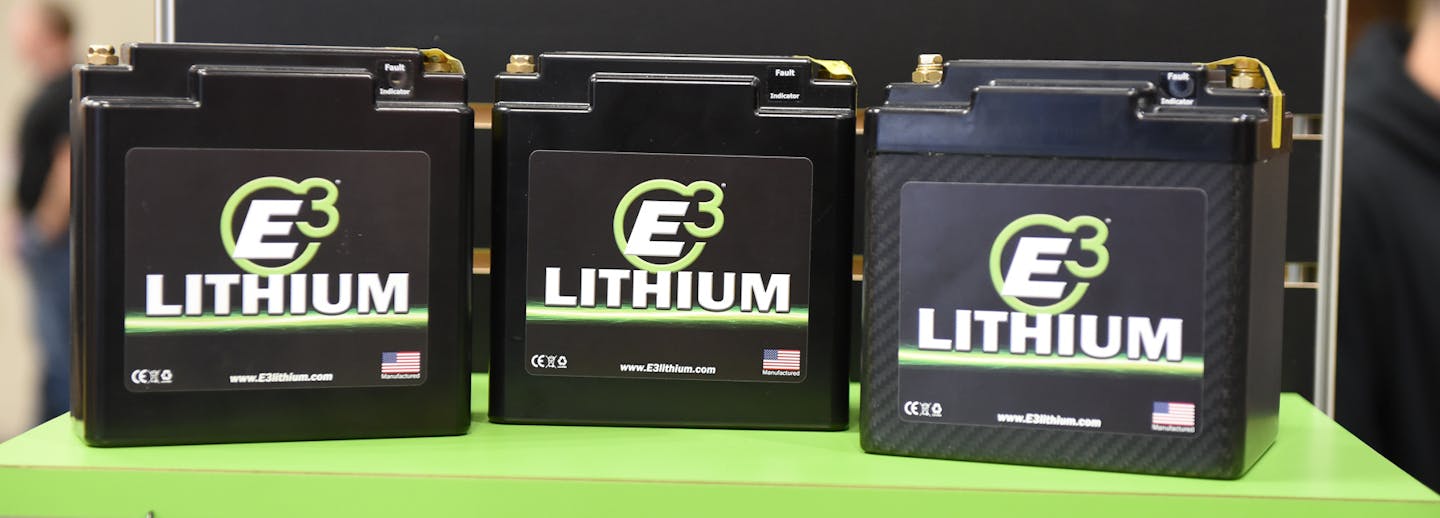E3 Ignition has long hung its hat on its spark plug technology, as well as its ignition coils, ignition boxes, wires, and even distributors. It’s only befitting then that the brand has leaned hard into the lithium racing battery market, applying the same industry-leading engineering and quality found in its many other products into creating lightweight and powerful batteries.

E3’s SuperLite racing batteries are designed not only with weight and cranking amperage in mind, but also safety (which we’ll get to in a moment).
The batteries on display at PRI, and those commonly used in drag racing applications, include the SuperLite 800 (E3.501), the SuperLite 1200 (E3.502), and the large and powerful SuperLite 1600 (E3.503).
“These new batteries target racing applications. There’s small, medium, and large. The smallest, the SuperLite 800, has 840 cranking amps, 16 amp-hour capacity, and weighs just 4.5 pounds. The next one up is 1,200 cranking amps, 25 amp-hour capacity, and weighs 6.5 pounds. And the biggest one is 1,600 cranking amps, 32 amp-hour capacity, and weighs 9 pounds. So these batteries weigh roughly 80 percent less than their lead-acids counterparts, and that’s a massive weight savings,” says E3’s Rob Fisher.

The big battery in the lineup, the SuperLite 1600, nicknamed “The Beast,” has a built-in Double Redundant Battery Management System, and with its 1600 pulse cranking amps and the 32 amp-hour capacity, E3 says it is pound for pound, the most powerful battery in its class. This battery is ideal for all types of motorsports applications as well as demanding powersports vehicles. The Beast can even power some of the most complex electronic race cars without the assistance of an alternator.
The SuperLite 1600 tips the scales at just 8.9 pounds. Its unique fault light indicator, which can even be hardwired into a dash mounted light, allows you to keep tabs on the performance of your battery. Some of the performance benefits include:
All of E3’s batteries offer a built-in battery management system, with over-charge protection, over-discharge protection, short circuit protection (up to 1,000 amps), excessive cranking protection, and have built-in cell balancing technology. That part is crucial to a safe battery.

“There’s two types of lithium: lithium-ion, and lithium iron phosphate, and they are two different chemistries. Lithium iron phosphate is a much more stable chemistry,” Fisher explains. “Inside the raised area on top of our battery, where the fault indicator is, there is a battery management system. To create the higher amperage and capacities to build a battery like this, to deliver a certain output, all you’re doing is wiring cells in a series or in parallel, or a combination thereof. This system keeps all of the internal cells in balance — one thing about lithium cells is that they have to stay in balance. They are individual output, so the battery management system regulates that. It also protects itself from any incoming power surges. The batteries also carry an 8G sustained impact rating, and a 20G point impact rating, so they can withstand something even as consistently tough as offshore powerboat racing or off-road racing and just keep going all day.”
You might also like
Lessons Learned From The EV Battery Fire At Wagler Motorsports Park
EV battery fires are something new for the drag racing world. Here's what the team at Wagler Motorsports Park learned from a battery fire.



